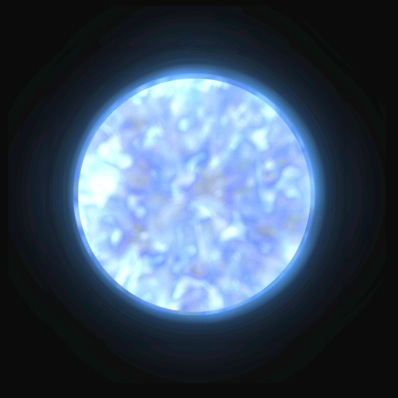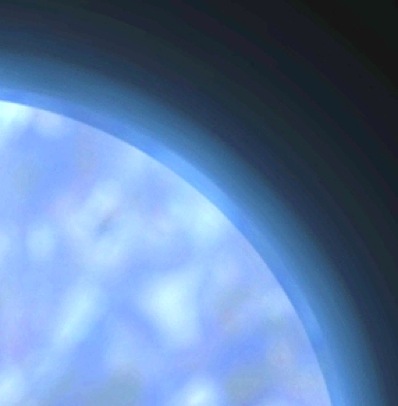
Most zirconium-rich
star discovered
DR EMILY BALDWIN
ASTRONOMY NOW
Posted: 08 December 2010


New research led by astronomers at Armagh Observatory have found the most zirconium-rich star yet. The element is found in clouds around the star in a concentration 10,000 times greater than in our own Sun.
The team, including graduate student Naslim and Dr Simon Jeffery from Armagh University in Northern Ireland, were studying an unusual group of stars known as hot subdwarfs, typically half solar mass stars that are burning helium in their cores and which posses extremely thin hydrogen atmospheres. They are stars left behind after the red giant phase in stellar evolution.
"About one in ten subdwarfs have helium-rich atmospheres instead of predominantly hydrogen," Jeffery tells Astronomy Now. "But the star we're studying (known as LS IV-14 116) is in between, so that was a bit of a surprise learning that we can't just divide this group of stars into helium and hydrogen."

An artist’s impression of LS IV-14 116. The white clouds are rich in zirconium and lie above the blue surface of the star. Credit: Natalie Behara.
The team used the Anglo-Australian Telescope at the Siding Spring Observatory to analyse light from LS IV-14 116, which resides 2,000 light years from the Sun towards the constellations of Capricornus and Aquarius. The team were surprised to detect zirconium in elevated amounts, the first time this signature has been observed in a stellar spectrum. The zirconium exists in a layer around the star at temperatures greater than 20,000 degrees Celsius and in a concentration 10,000 times higher than found in our Sun. That means that one atom in every two hundred thousand is zirconium rather than one in two billion in the case of the Sun.
Other strong signatures in the stellar spectrum came from elements strontium, germanium and yttrium, which were found to be between one thousand and ten thousand times more abundant than normal, although the elements are concentrated into the layer observed, rather than across the whole star, since only the atmosphere of the star can be seen directly.
"If you were to change the temperature of the star slightly then the height at which the zirconium forms might be at a layer in which you are unable to see it, but you might see a different element instead," says Jeffery. "What we have is a competition between two processes called gravitational settling and radiative levitation." The latter process describes the way in which light acts upon different atoms with a different strength, and results in multiple, thin cloud-like layers, each with a different composition. The atmospheres of most other stars, like our own Sun, do not exhibit these layers because they are very turbulent compared with the hot subdwarfs that do not have convection or other mixing processes.

Clouds of elements such as zirconium, strontium, germanium and yttrium lie in layers around the star. Image: Natalie Behara.
"If you imagine you're a zirconium atom and see a photon of a particular wavelength coming along, you happen to be very much better at absorbing those photons than another element, say iron in this case, so you float up while the iron sinks down," explains Jeffery. "As you float up you will cool, and so at some point the photons are no longer there to hold you up and you might drift back down. It's a bit like being a hot air balloon!"
The team suggest that they are observing the star in a very short-lived phase. "If we were able to wait perhaps 1,000 or 10,000 years, the zirconium would disappear and would be replaced by something else, and if we wait another 100,000 years we might see even the helium sink out of the star," says Jeffery. "So if we could find sufficient numbers of similar stars containing different layers of other elemental species, we might identify a sequence by which these stars are forming."
Jeffery adds that another puzzling observation is that the star is rotating very slowly, which seems to rule out the star's formation from a binary pair or a merger, events that would likely result in a rapid rotation. "We don't quite know what to make of that, so there are certainly challenges to come!"
The results of the study will be published in the Monthly Notices of the Royal Astronomical Society.
|



